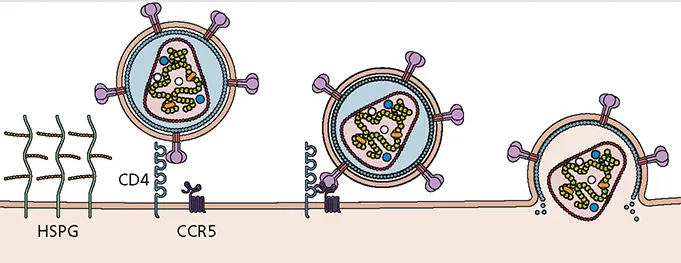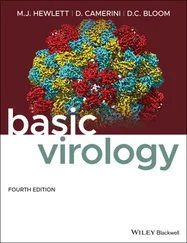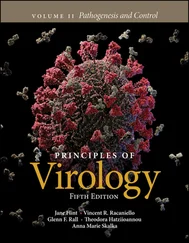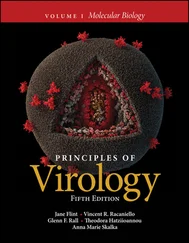Jane Flint - Principles of Virology
Здесь есть возможность читать онлайн «Jane Flint - Principles of Virology» — ознакомительный отрывок электронной книги совершенно бесплатно, а после прочтения отрывка купить полную версию. В некоторых случаях можно слушать аудио, скачать через торрент в формате fb2 и присутствует краткое содержание. Жанр: unrecognised, на английском языке. Описание произведения, (предисловие) а так же отзывы посетителей доступны на портале библиотеки ЛибКат.
- Название:Principles of Virology
- Автор:
- Жанр:
- Год:неизвестен
- ISBN:нет данных
- Рейтинг книги:3 / 5. Голосов: 1
-
Избранное:Добавить в избранное
- Отзывы:
-
Ваша оценка:
- 60
- 1
- 2
- 3
- 4
- 5
Principles of Virology: краткое содержание, описание и аннотация
Предлагаем к чтению аннотацию, описание, краткое содержание или предисловие (зависит от того, что написал сам автор книги «Principles of Virology»). Если вы не нашли необходимую информацию о книге — напишите в комментариях, мы постараемся отыскать её.
Volume I: Molecular Biology
Volume II: Pathogenesis and Control
Principles of Virology, Fifth Edition
Principles of Virology — читать онлайн ознакомительный отрывок
Ниже представлен текст книги, разбитый по страницам. Система сохранения места последней прочитанной страницы, позволяет с удобством читать онлайн бесплатно книгу «Principles of Virology», без необходимости каждый раз заново искать на чём Вы остановились. Поставьте закладку, и сможете в любой момент перейти на страницу, на которой закончили чтение.
Интервал:
Закладка:
BOX 5.1
TERMINOLOGY
Is it a receptor or a coreceptor?
The use of the words “attachment factors,” “receptors,” and “coreceptors” can be confusing, particularly as different terminologies are adopted in different manuscripts. Convention dictates that the first cell surface molecule that is found to be essential for virus binding is called its receptor. However, virus particles may initially bind molecules that aid attachment to the cell surface but are not essential for binding, termed attachment factors. Binding to attachment factors is generally nonspecific, mediated by electrostatic interactions, and does not permit virus entry into the cell.
Following specific binding of the viral proteins to the receptor, binding to additional cell surface molecules, known as coreceptors, may be required for entry to occur. The distinction between receptors and coreceptors usually relies on the order in which they are bound; however, this order might be difficult to determine experimentally and can be influenced by cell type and multiplicity of infection. Additionally, a particular cell surface molecule that serves as an attachment factor for one virus may be a receptor for another. The use of these terms is meant to facilitate our understanding, even though it might not be entirely precise.

Example of virus attachment factors, receptors, and coreceptors.The human immunodeficiency virus type 1 envelope glycoprotein mediates all interactions with target cell surface molecules. Electrostatic interactions with heparan sulfate proteoglycans (HSPGs) can enhance the initial attachment of the virus particle for some strains (but can inhibit others). HSPG binding is notrequired for entry. The primary receptor for human immunodeficiency virus type 1 is CD4, and the CD4 binding site has been precisely mapped on the viral envelope glycoprotein. Interaction with CD4 induces conformational changes that allow the envelope protein to engage a coreceptor, usually CCR5. Binding to CD4 is required for binding to CCR5; hence CCR5 is a coreceptor. Interaction with CCR5 induces further changes in the envelope glycoprotein that result in fusion of the viral and target cell membranes (see text).
Identification of Receptors for Virus Particles
Decades of technological advances have enabled the identification of many receptors for viruses. First, production of monoclonal antibodies provided a powerful means of isolating and characterizing individual cell surface proteins. Hybridoma cell lines that secrete monoclonal antibodies that block virus attachment are obtained after immunizing mice with intact cells. Such antibodies can be used to purify the receptor protein by affinity chromatography.
A second technology that facilitated the identification of receptors was the development of cell transfection with DNA. This method was crucial for isolating genes that encode receptors, following introduction of DNA from susceptible cells into nonsusceptible, but otherwise permissive, cells ( Fig. 5.2). Cells that acquire DNA encoding the receptor and carry the corresponding protein on their surface are able to bind virus particles specifically. Clones of such cells are recognized and selected by several different methods ( Fig. 5.2). The receptor genes can then be isolated from these selected cells using molecular cloning. These technologies were groundbreaking when first developed and continue to be very useful. For example, the receptor for Middle Eastern respiratory syndrome coronavirus was identified just 4 months after the first description of the virus using affinity isolation with a hybrid envelope-antibody molecule.
As new technologies become available, they are also employed in the identification of viral receptors. The murine norovirus and the bat influenza A virus receptors were identified using a genome-wide CRISPR (clustered regularly interspaced short palindromic repeat)/Cas9 screen ( Chapter 2). After multiple rounds of infection, single guide RNAs targeting plasma membrane proteins were enriched in cells that survived, demonstrating that these proteins were important for infection by the virus used in the screen. Screens that rely on knocking down gene expression benefit from the availability of haploid cells, which carry a single copy of each gene. A human haploid cell line proved very useful in the identification of ebolavirus and Lassa virus receptors by insertional mutagenesis. As with every screen, the function of each protein identified as a viral receptor was confirmed using additional experimental approaches.

Figure 5.2 Experimental strategies for identification and isolation of genes encoding cell receptors for viruses. (A)Genomic DNA or pools of DNA clones made from messenger RNA from cells known to synthesize the receptor are introduced into receptor-negative permissive cells. When complementary DNAs (cDNAs) cloned in a plasmid are used as the donor DNA, pools of individual clones (typically thousands) are prepared and introduced into cells. A small number of transduced cells will produce the receptor. The specific DNA pool that yields receptor-producing cells is then subdivided, and the screening process is repeated until a single receptor-encoding DNA is identified. Three different strategies for identifying such rare receptor-expressing cells are shown. (I) The cells are infected with a virus with a genome that has been engineered to carry a gene encoding drug resistance. Cells that express the receptor will become resistant to the drug. This strategy works only for viruses that persist in cells without killing them. (II) For lytic viruses, an alternative is to engineer the viral genome to express an indicator, such as green fluorescent protein or β-galactosidase. Cells that make the correct receptor and become infected with such viruses can be distinguished by the apparent fluorescent color change. (III) The third approach depends on the availability of an antibody directed against the receptor, which binds to cells that express the receptor gene. Bound antibodies can be detected by an indicator molecule. (B)Alternatively, approaches that rely on survival of receptor-negative cells can be employed. In such strategies, genome-wide screens are performed by either CRISPR/Cas9 or alternative methods that aim to disrupt receptor expression in susceptible and permissive cells. Cells are then infected with a cytopathic virus or a recombinant cytopathic virus, such as vesicular stomatitis virus, carrying the envelope protein of the virus under investigation. Disrupted genes can then be identified in surviving cells. In all strategies, iterative rounds of screening are performed.
The availability of receptor genes has made it possible to investigate the details of receptor interaction with virus particles by site-directed mutagenesis. Receptor proteins can be synthesized in heterologous systems and purified, and their properties can be studied in vitro , while cells in culture that produce altered receptor proteins can be used to test how they affect virus attachment. Because of their hydrophobic membrane-spanning domains, many of these cell surface proteins are relatively insoluble and difficult to work with. Although recent advances in cryo-electron microscopy can now aid in determining the structure of large complexes and transmembrane proteins, soluble extracellular protein domains (that contain the virus binding sites) have been essential for structural studies of receptor-virus interactions.
Читать дальшеИнтервал:
Закладка:
Похожие книги на «Principles of Virology»
Представляем Вашему вниманию похожие книги на «Principles of Virology» списком для выбора. Мы отобрали схожую по названию и смыслу литературу в надежде предоставить читателям больше вариантов отыскать новые, интересные, ещё непрочитанные произведения.
Обсуждение, отзывы о книге «Principles of Virology» и просто собственные мнения читателей. Оставьте ваши комментарии, напишите, что Вы думаете о произведении, его смысле или главных героях. Укажите что конкретно понравилось, а что нет, и почему Вы так считаете.











